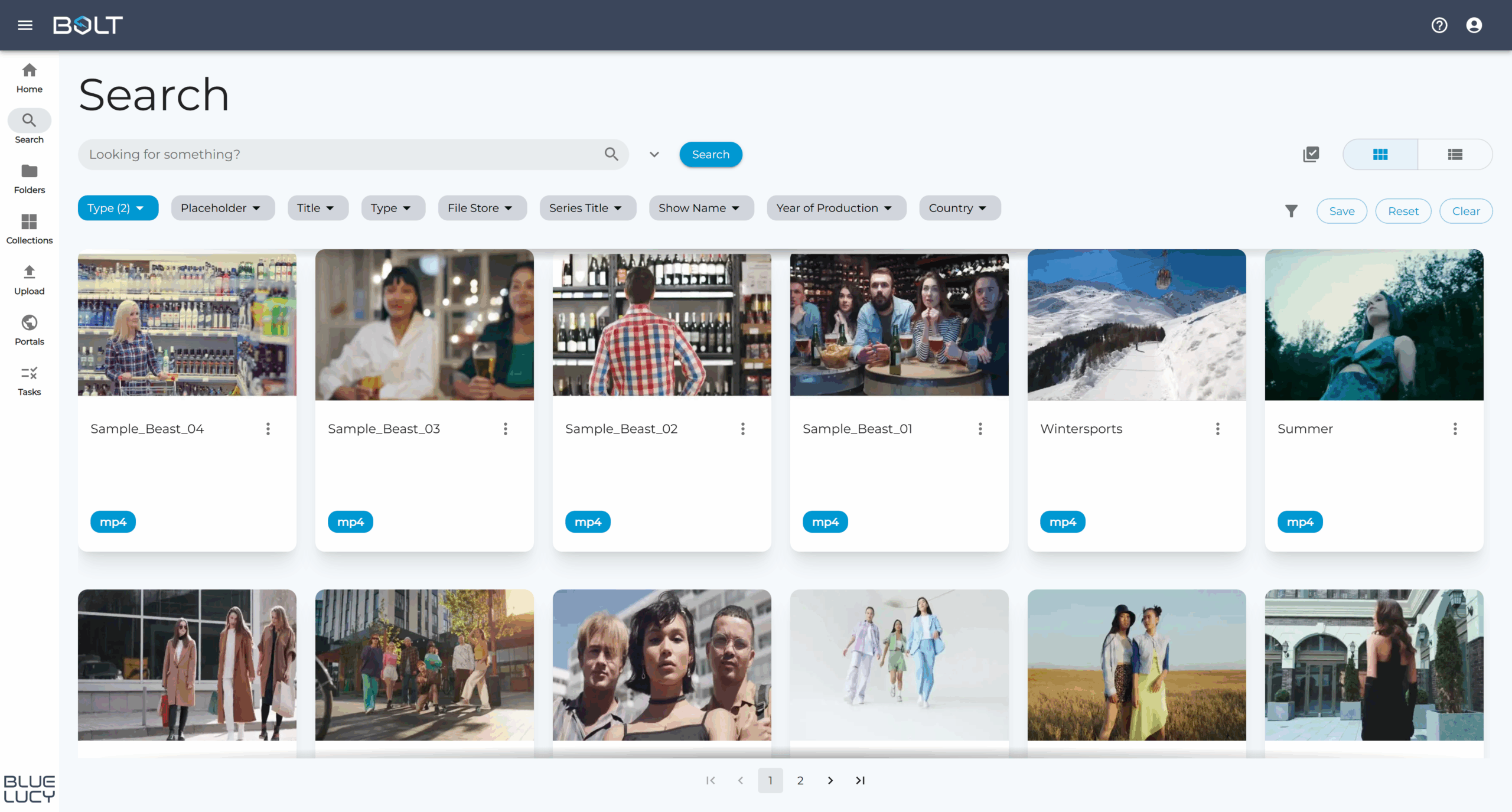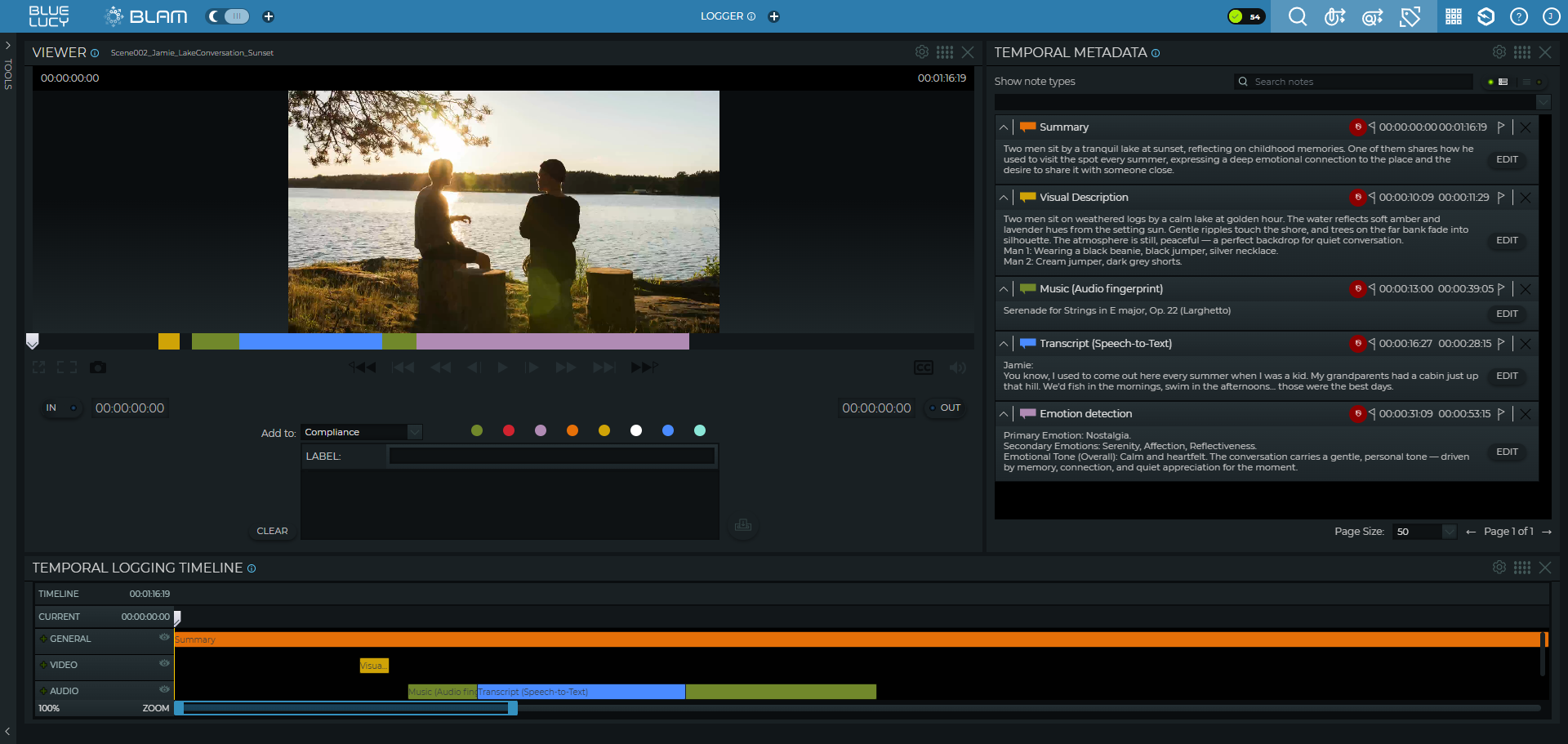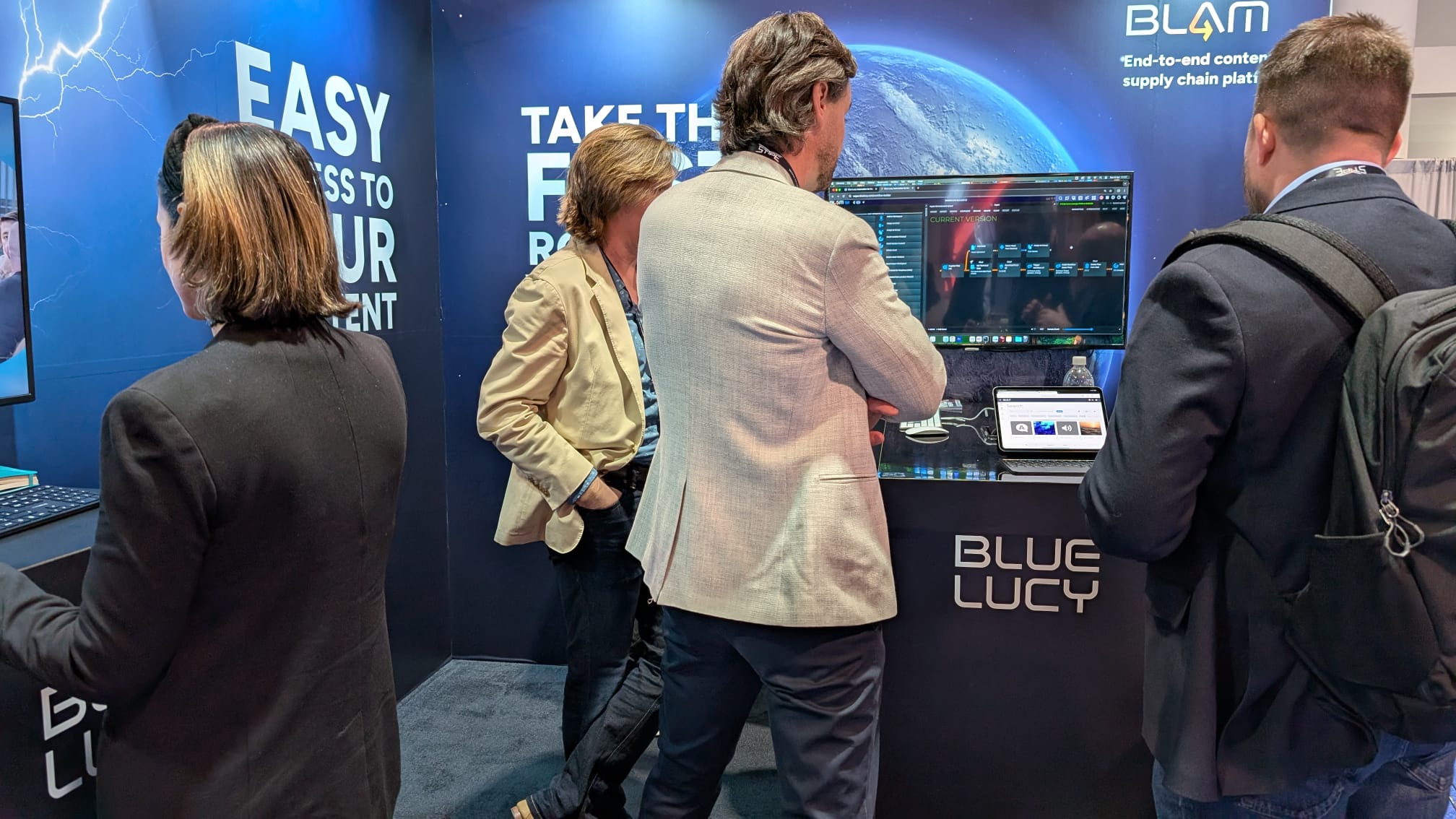
Building a unified, secure localisation operating model with Blue Lucy
When VSI Group, one of the world’s leading localisation providers, set out to modernise its complex, multi-site operations built through years of acquisition and growth, the challenge was to achieve both security and scalability while streamlining critical workflows across the business.
Handling vast amounts of sensitive, time-critical content for major studios and streaming platforms demanded automation, traceability, and accountability at every stage.
Partnering with Blue Lucy, VSI implemented the BLAM Content Factory, the highly configurable workflow orchestration and media asset management platform that securely automates and audits content operations. The result is a unified, high-volume operation that empowers VSI’s project teams to manage, track, and deliver content efficiently, confidently, and at scale.
Since deployment, VSI has achieved measurable gains in speed, security, and visibility – processing over two million automated service executions per month and increasing overall media throughput by over 50%.
The Challenge
Over more than three decades of growth, VSI Group’s localisation operations had evolved. As the company expanded into new regions and services, the underlying systems multiplied. “As we expanded our footprint, we acquired lots of different systems doing small tasks,” recalls Pete Lewis, Group Studios and Systems Director at VSI. “We needed a solution that could consolidate multiple, complex systems into a more streamlined, unified process.”
Each system worked in isolation, with no centralised system to track or log assets. Files were handled manually, stored on disks and network folders, and transferred via user-dependent processes.
“We wanted to make security core to our management and transfer of assets,” says Pete. “Having an automation system like the BLAM Content Factory meant we could disconnect the user from the media but still carry out what used to be manual tasks automatically”.
With global clients demanding ever-tighter turnarounds – sometimes within 24 hours – and security requirements rising across the industry, VSI needed a solution that could automate, secure, and scale its localisation workflows.
Who are VSI?
Founded in 1989, VSI Group is a global leader in localisation, adapting film, TV, and multimedia content for audiences around the world. Operating through a network of studios across major territories, VSI provides end-to-end services including dubbing, subtitling, translation, and media processing for clients ranging from major Hollywood studios to leading streaming platforms.
“The streamers of the world – Netflix, Amazon, Disney – have driven the demand for high-quality localisation,” says Pete. “They require content to go live in all languages on the same day. That’s where automation has become essential.”
From Fragmentation to Flow
Before implementing BLAM, VSI’s workflows relied on a patchwork of tools and self-developed software.
Recognising the need for a unified system, VSI conducted a wide-ranging technology review, assessing around 30 MAM solutions. “So many of them did parts of what we wanted,” says Pete. “But what stood out about Blue Lucy was that whatever we wanted to do, it was possible. There was nothing we were told ‘can’t be done’.”
The microservice-based architecture of BLAM was another key factor: “Being able to build things out of microservice agents was much faster when compared to scripting or workarounds.”
The Blue Lucy Solution
Working closely with VSI, Blue Lucy configured the BLAM Content Factory to match VSI’s complex localisation workflows and security requirements. The platform provided:
- A customised user interface built around VSI’s operator preferences
- Automated ingest-to-delivery workflows spanning file transfer, transcoding, subtitling, and text-to-speech dubbing
- A bespoke virtualised folder structure aligned with VSI’s project logic, simplifying discovery and work-in-progress operations
- Integrated watermarking and audit tracking for security and traceability
- Secure, trackable vendor exchanges, eliminating manual ‘shipping’ processes
As VSI’s business has evolved, the platform expanded to integrate with more third-party systems, including OOONA, transcription services, and subtitle validation tools.
“We’re adding integrations all the time,” says Pete. “Some are small touch points that inform another system something’s happened, others are new services altogether. The upshot is we can process and handle more media, faster, with less human intervention.”
During workflow design, VSI’s teams quickly realised how many previously manual steps could be eliminated. “Originally, we’d planned for people to enter data or trigger stages manually,” Pete explains. “But we discovered the system could handle that automatically. Users just select what they want and where it goes, press a button, and off it goes. No one in the back end needs to do anything at all.”
Results and Impact
Since the initial deployment in 2022, the BLAM Content Factory has transformed VSI’s operational landscape.
- 50% increase in throughput without additional headcount
- 2,000+ assets ingested and delivered daily
- Around 30 connected systems, both internal and third-party
- More than two million microservice agent executions monthly
“Because we can handle more media faster and with less human intervention, we are able to scale more rapidly,” says Pete. “We can meet deadlines faster and handle larger volumes of content.”
Crucially, security has been elevated to a new level. “No one actually sees anything until it’s in the system,” Pete explains. “We treat every project, whether a theatrical release or a YouTube short, with the same high security. Using BLAM Content Factory makes that simple.”
Reliability has been another major success factor. “The platform is robust” says Pete. “If there’s ever a hiccup, Blue Lucy fixes it. There’s never a ‘known bug you have to live with’. That’s been seriously important for us because our operation runs 24/7.”
Looking ahead, VSI plans to expand the BLAM Content Factory across all VSI international offices, establishing a central repository of media and metadata, and integrating AI-driven automation and analytics. “Outputs from AI services will be stored with the asset in BLAM,” says Pete. “It’ll make them searchable and reusable for further processes.”
Outcomes at a Glance
- Unified, automated global workflows
- 50% increase in media throughput
- Secure, auditable operations
- 24-hour turnaround capability
- Global rollout planned across all VSI sites
- Foundation in place for AI-driven metadata and automation
“Rewarding” Collaboration
Pete describes the partnership with Blue Lucy as both practical and creative:
“It’s rewarding because there never seems to be a problem. The attitude is always, ‘We’ll find a way to do that.’ We’ve got some pretty esoteric workflows. We’re not a channel, and every client has their own naming conventions and workflow differences, but the BLAM Content Factory handles it all. The system just works.”
VSI renewed its partnership with Blue Lucy in November 2025.








